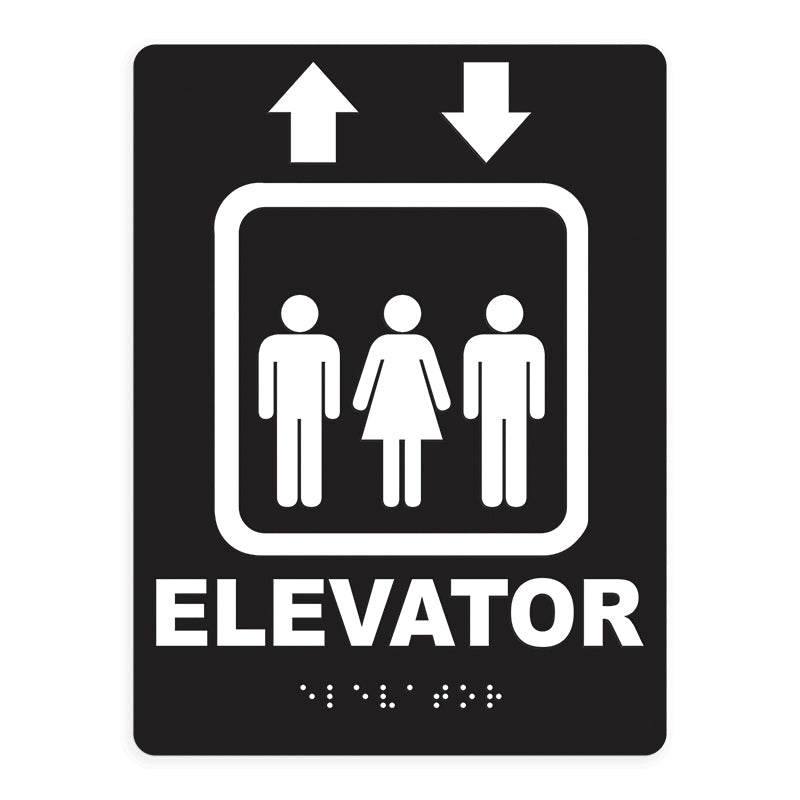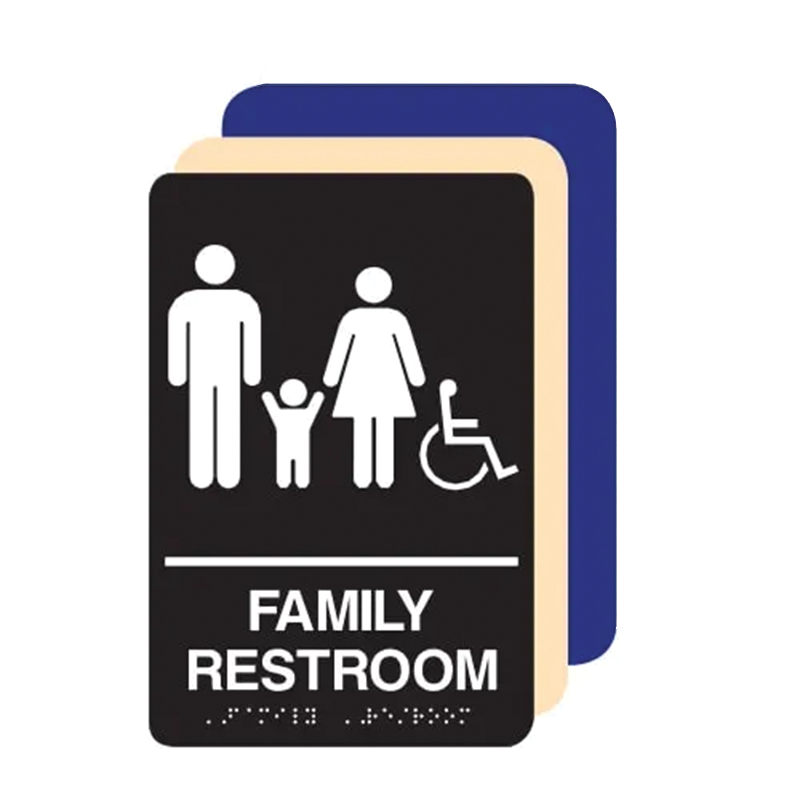Understanding the Regulations Behind ADA Signs
Understanding the Regulations Behind ADA Signs
Blog Article
ADA Signage: Making Sure Ease Of Access and Compliance in Public Spaces
ADA signage plays an important duty in guaranteeing availability and conformity within public rooms, considerably contributing to an inclusive setting for individuals with specials needs. As we discover the nuances of ADA signs, from tactile features to design intricacies, it's critical to consider how these aspects coalesce to support the civil liberties of all individuals.
Relevance of ADA Signs
In modern-day culture, the significance of ADA signs prolongs beyond mere conformity with legal mandates to symbolize a dedication to inclusivity and ease of access for all individuals. These indicators are crucial in developing environments where people with handicaps can navigate public areas with the very same convenience and freedom as those without specials needs. By offering standardized and clear info, ADA signage makes sure that every person can access centers, solutions, and info without barriers.
The relevance of ADA signs hinges on its capability to boost the lifestyle for individuals with handicaps by promoting equal access. It gets rid of the barriers that may otherwise hinder their capability to get involved totally in neighborhood life. Additionally, these signs act as visible signs of an organization's dedication to variety and equal rights, reflecting broader social values that promote the legal rights and self-respect of all people.
Furthermore, ADA signs plays an important function in public security. By leading people to departures, toilets, and other vital facilities, it ensures that all individuals, no matter physical ability, can leave securely during emergency situations. In recap, ADA signage is not just a regulatory need yet a powerful device for fostering a equitable and inclusive society.
Key Elements of Conformity

Positioning is essential; indications need to be installed in locations that are obtainable and quickly noticeable. Normally, signs needs to be placed between 48 and 60 inches from the ground to guarantee availability for both standing and mobility device users. Tactile aspects, such as Braille, are essential for individuals with visual problems, providing important information in a non-visual format.
High-contrast colors in between the text and history are necessary to boost readability for individuals with reduced vision. The ADA mandates details comparison proportions to guarantee quality. Additionally, character dimension is a vital consideration, with minimal elevation demands determined by the watching distance to make certain readability from various angles.
Layout Factors To Consider for Availability
Creating accessible signs needs a meticulous method to ensure it meets the needs of all customers, especially those with handicaps. The dimension of the message is equally critical, with ADA standards suggesting a minimal height based on viewing distance to make certain legibility.
Contrasting shades between message and history are crucial for presence, particularly for people with aesthetic problems. Furthermore, tactile elements, such as Braille and elevated characters, are important for people who are blind or have reduced vision.
Furthermore, the placement of signage plays a substantial function in ease of access. Signs need to be mounted in areas that are unobstructed and easily obtainable. Ensuring that signage is installed at proper elevations and angles allows all individuals, including those utilizing mobility devices, to communicate with them successfully.
Common Errors to Prevent

One more widespread error is the incorrect positioning of signage. ADA standards specify specific height and area demands to make sure that signs are quickly noticeable and reachable by all individuals, consisting of those making use of wheelchairs. Disregarding these standards not just hampers ease of access yet also risks non-compliance with legal requirements.
In addition, insufficient contrast between message and background is a constant oversight. Ample comparison is essential for readability, specifically for individuals with reduced vision. Designers sometimes pick shades that are aesthetically appealing however do not have the required contrast, making the text challenging to recognize.
Last but not least, some designers fail to incorporate tactile components, such as Braille, which are essential for individuals who are blind. Omitting these features not just causes non-compliance with ADA laws however additionally limits gain access to for a sector of the population that counts on responsive details.
Future Trends in Signs
Advancements in innovation and boosting understanding of inclusivity find more are forming the future trends in signage design. As society becomes much more mindful of diverse demands, the combination of wise modern technologies right into signs is getting grip. Digital signage, for instance, is developing to include interactive functions and real-time updates, which can be important in supplying vibrant info in public spaces. These signs typically incorporate touch displays or gesture-based controls, making it possible for customers to browse material tailored to their details requirements.
Another arising pattern is the use of augmented fact (AR) to enhance customer experience. AR-enabled signage can overlay electronic information onto the physical setting, giving aesthetically impaired people with auditory a knockout post or haptic feedback. ADA Signs. This modern technology not only enhances ease of access yet also produces an engaging experience for all individuals
Sustainability is also a considerable factor influencing signs trends. Green products and energy-efficient lighting options are being prioritized to line up with international environmental goals. Developments in products scientific research are leading to the growth of more sturdy check that and weather-resistant indications.
Final Thought
ADA signs plays a vital role in assuring ease of access and conformity within public rooms by including responsive elements, high-contrast colors, and tactical placement. The adherence to ADA requirements not just promotes secure navigating for people with disabilities but also represents a company's commitment to variety and inclusivity. By staying clear of usual blunders and welcoming future fads, public rooms can remain to progress these worths, making sure that the civil liberties and self-respect of all people are appreciated and supported.
ADA signage plays an important function in ensuring ease of access and compliance within public spaces, considerably contributing to a comprehensive setting for people with specials needs. As we explore the nuances of ADA signs, from responsive functions to develop complexities, it's essential to consider just how these aspects coalesce to copyright the civil liberties of all individuals.In contemporary society, the value of ADA signs extends past simple compliance with lawful requireds to personify a commitment to inclusivity and ease of access for all people. By supplying standard and clear information, ADA signs makes certain that every person can access centers, solutions, and details without barriers.
ADA signs plays a crucial role in assuring availability and compliance within public rooms by integrating responsive components, high-contrast shades, and tactical positioning. (ADA Signs)
Report this page